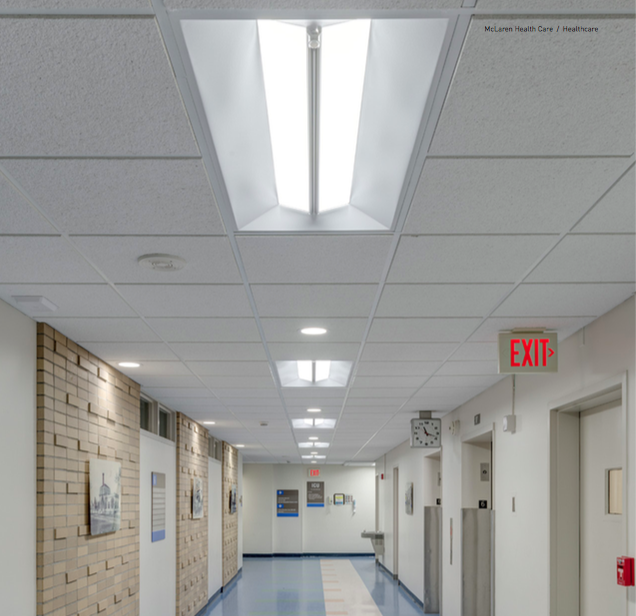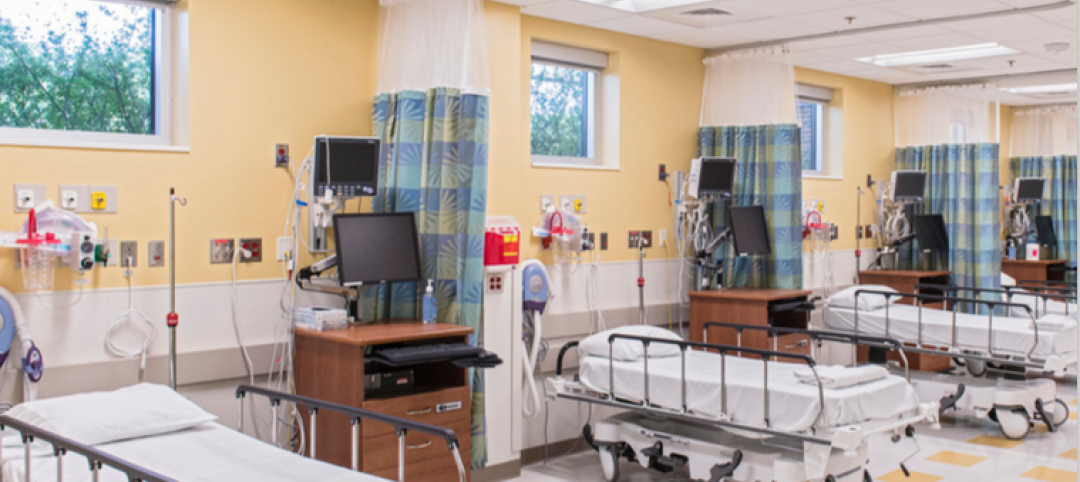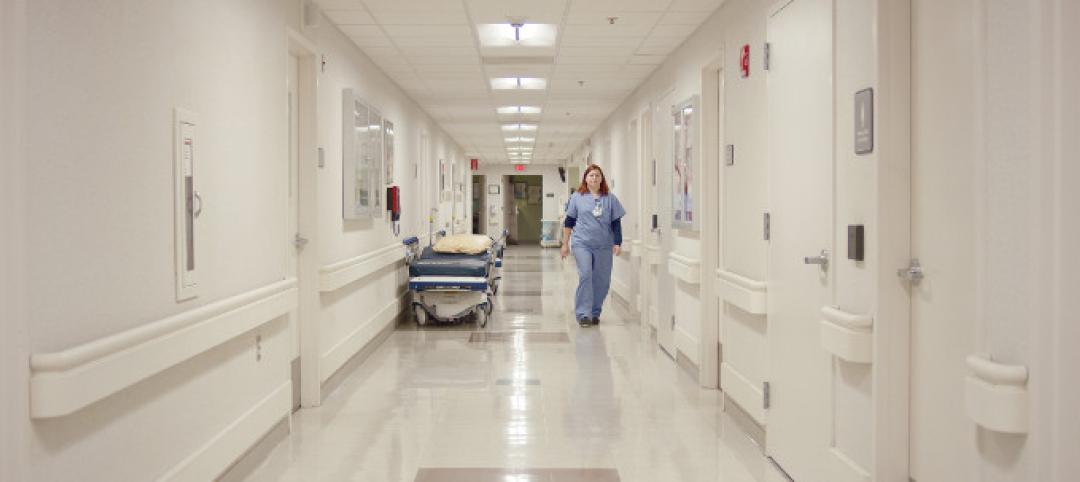Today’s healthcare organizations are under pressure to increase patient satisfaction, improve quality of care and become more sustainable. They must also lower costs, so any investment they make in the physical facility has to have a measurable return or it is simply unaffordable. Upgrading to a smart LED lighting system results in lower energy consumption and decreased energy costs, but beyond those obvious savings, there are a range of impacts to hospitals that result in a stronger bottom line and better fulfillment of the healthcare mission.
The recent experiences of McLaren Health Care in Michigan illustrate the expanding benefits of LED smart lighting systems for healthcare facilities. After a pilot project in 2014 that upgraded lights at McLaren Macomb’s surface lots and parking structure to LED, the Corporate Facilities Manager for McLaren Health Care, Keith Miller, sought to upgrade all the lighting throughout 11 of the system’s primary hospitals. Working with their energy solutions provider, McLaren installed over 25,000 light fixtures from Cree across its facilities, including more than 12,000 Cree SmartCast® intelligent lighting luminaires—smart, adaptive, networked lighting that responds to human activities and behaviors.
High-quality LED lighting is known to be more energy-efficient than incandescent or fluorescent technologies, producing more significant light from the same amount of energy. That translates into both lower energy costs for illumination and lower energy consumption for more sustainable operation. For Miller and McLaren Health Care, the SmartCast® system is estimated to save $1.6 million per year, for a payback time of less than four years. That savings includes both reduced energy costs and a wide range of other money-saving effects.
The LED lighting upgrades installed at McLaren hospitals not only use less energy to provide better light, they also act strategically to lower energy consumption. The systems learn to dim lights during daylight hours to take advantage of natural sunlight while still keeping balanced and consistent levels of illumination. They can also be aware of human presence, turning off the lights when there is no one in the room and turning them back on as people enter.
Longer-Term Benefits
In addition to the advances made possible by intelligent lighting, LEDs remain fully functional through years of use much longer than incandescent or fluorescent bulbs. Cree warranties its fixtures—including the LED emitters—for 10 years, so McLaren can also reap cost savings on bulb replacements, both in terms of materials, labor and storage costs.
Other bottom line impacts may be harder to quantify, but are nonetheless significant. Under today’s rules, hospital’s reimbursement rates are tied to patient satisfaction, as measured by the Hospital Consumer Assessment of Healthcare Providers and Systems survey (HCAHPS). Low scores can lead to a lower reimbursement rate, so healthcare facilities are incentivized to improve patient satisfaction. With more patients “shopping around” for hospitals in the manner of consumers—reading online reviews and ratings by other patients before choosing—healthcare systems must maintain cutting-edge top facilities to earn that satisfaction.
Gaining the Edge
Lighting has been shown to strongly influence occupancy experience, affecting the mood, comfort, and stress levels of occupants such as patients, visitors, and staff. Intelligent lighting that learns an occupant’s preferences and automatically adjusts the light for them can make an unfamiliar room seem more welcoming. The SmartCast® lighting solution that McLaren installed can even change the color of the light to better simulate sunlight during the day, and provide more sleep-conducive color at night.
Better lighting can also improve staff performance, such as reducing medication-dispensing errors, and increasing alertness and medical decision-making ability. It can also help prevent burnout and make a hospital a more desirable place to work for skilled professionals.
Healthcare has become more of a marketplace, and hospitals need to be more competitive in terms of both satisfying patients and retaining talented and personable staff. Smart LED lighting gives a facility an edge by making it function better, more efficiently, and at lower cost.
Related Stories
Building Materials | Jun 20, 2022
Early-stage procurement: The next evolution of the construction supply chain
Austin Commercial’s Jason Earnhardt explains why supply chain issues for the construction industry are not going to go away and how developers and owners can get ahead of project roadblocks.
75 Top Building Products | Dec 16, 2019
Top Building Systems Products for 2019
FabricAir’s ceiling-hung fabric duct and Ellumi Lighting’s bacteria-killing lights are among the 13 new building systems products to make Building Design+Construction's 2019 101 Top Products report.
Sponsored | Healthcare Facilities | Mar 29, 2017
Using Better Light for Better Healthcare
Proper lighting can improve staff productivity, patient healing, and the use of space in healthcare facilities
Sponsored | Intelligent Lighting | Mar 22, 2017
Even Smarter Than You Think
In commercial settings, LED smart lighting systems can reduce energy and maintenance costs while improving employee satisfaction











